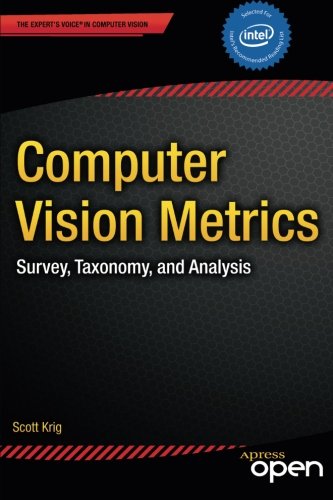

Most ebook files are in PDF format, so you can easily read them using various software such as Foxit Reader or directly on the Google Chrome browser.
Some ebook files are released by publishers in other formats such as .awz, .mobi, .epub, .fb2, etc. You may need to install specific software to read these formats on mobile/PC, such as Calibre.
Please read the tutorial at this link: https://ebookbell.com/faq
We offer FREE conversion to the popular formats you request; however, this may take some time. Therefore, right after payment, please email us, and we will try to provide the service as quickly as possible.
For some exceptional file formats or broken links (if any), please refrain from opening any disputes. Instead, email us first, and we will try to assist within a maximum of 6 hours.
EbookBell Team

4.8
104 reviewsComputer Vision Metrics provides an extensive survey and analysis of over 100 current and historical feature description and machine vision methods, with a detailed taxonomy for local, regional and global features. This book provides necessary background to develop intuition about why interest point detectors and feature descriptors actually work, how they are designed, with observations about tuning the methods for achieving robustness and invariance targets for specific applications. The survey is broader than it is deep, with over 540 references provided to dig deeper. The taxonomy includes search methods, spectra components, descriptor representation, shape, distance functions, accuracy, efficiency, robustness and invariance attributes, and more. Rather than providing ‘how-to’ source code examples and shortcuts, this book provides a counterpoint discussion to the many fine opencv community source code resources available for hands-on practitioners.
What youll learnEngineers, scientists, and academic researchers in areas including media processing, computational photography, video analytics, scene understanding, machine vision, face recognition, gesture recognition, pattern recognition and general object analysis. Table of Contents
Chapter 1. Image Capture and Representation
Chapter 2. Image Pre-Processing
Chapter 3. Global and Regional Features
Chapter 4. Local Feature Design Concepts, Classification, and Learning
Chapter 5. Taxonomy Of Feature Description Attributes
Chapter 6. Interest Point Detector and Feature Descriptor Survey
Chapter 7. Ground Truth Data, Data, Metrics, and Analysis
Chapter 8. Vision Pipelines and Optimizations
Appendix A. Synthetic Feature Analysis
Appendix B. Survey of Ground Truth Datasets
Appendix C. Imaging and Computer Vision Resources
Appendix D. Extended SDM Metrics